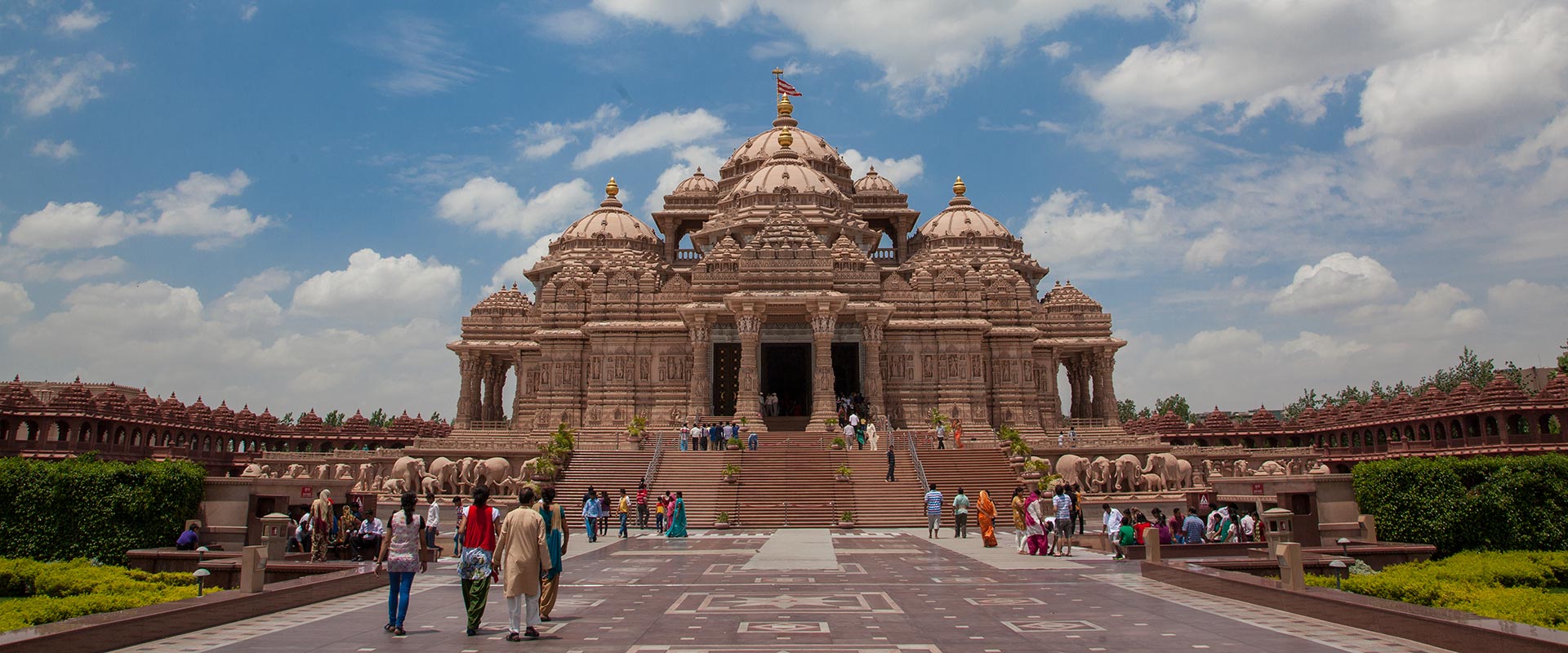


The heart of the Swaminarayan Akshardham complex is the Akshardham mandir.
Inaugurated on 6 November 2005, the mandir is an effort to offer a home to God that honors . His glory and divinity –- a timeless, beautiful and peaceful home for God here on Earth. It is a temporal abode of God and the devotion, values and culture He inspires.
Architecturally, the mandir is an homage to traditional Indian Hindu architecture. It is designed with an eye to The ancient and middle-agemedieval Indian treatises on architectural science, - the shilpa shastras, have guided the mandir’s design and construction from its distinctive style of carving and its proportions to its avoidance of .
Accordingly, the mandir is made without the use of ferrous metal in construction.
The Akshardham mandir consists of 234 intricately carved pillars, 9 ornate domes, 20 quadrangled spires and 20,000 statues of India’s Hinduism’s spiritual personalities. The mandir reaches 141.3 feet into the sky, spans 316 feet in width,
and is 356 feet long.
Inside the mandir, each worshipfully carved pillar, ceiling and dome shares a story of devotion, offers darshan of a deity, or captures an incident from the life of Bhagwan Swaminarayan.

